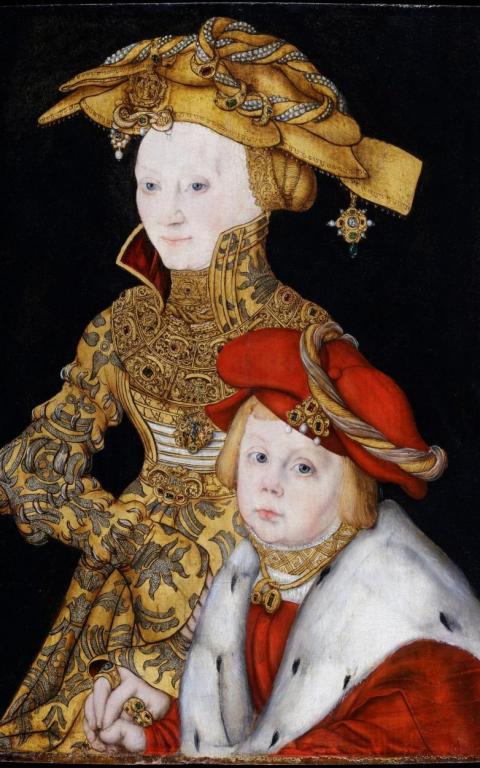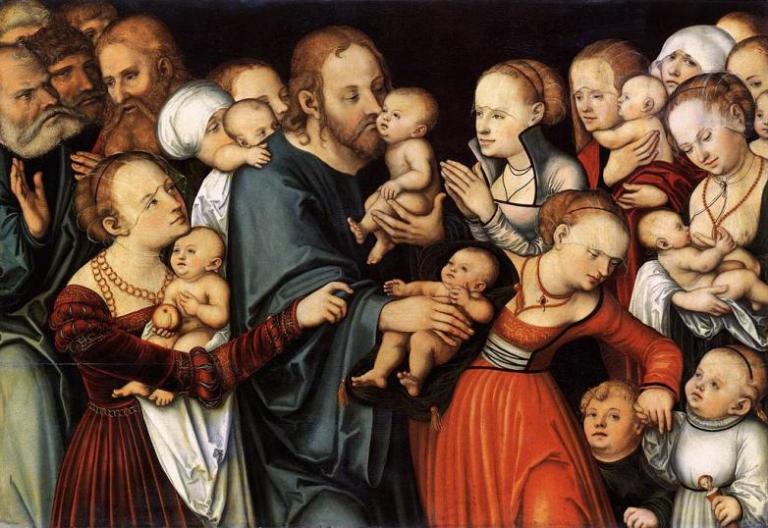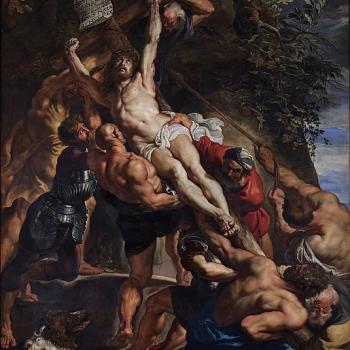
Leonardo da Vinci is not the only Renaissance artist to have a new work added to his canon. So has Lucas Cranach, Luther’s good friend and the patron of this blog!
A painting entitled “Portrait of a Lady and Her Son” has just been attributed to Cranach. As with the Leonardo “Savior of the World,” it existed in numerous copies. Queen Victoria gave this particular painting as a gift to her husband, Prince Albert, who hailed from Germany and was a fan of the great Reformation artist. The Queen believed this to be an authentic Cranach and, as usual, she was right.
Experts studied this painting, which is still held by the British Royal Family, applying infrared reflectography, x-rays, and analysis of the pigment analysis. A key bit of evidence was the discovery that the fibrous material used to strengthen the panel on which the work was painted was pigeon tendon, which Cranach was known to have used. The high-tech analysis, which included DNA testing of the pigeon tendons, showed that this painting was made of the same material as other works known to be by Cranach.
The painting, dated 1510-1540, shows an unnamed “Electress” in an elaborate costume holding the hand of her little boy. An “electress” would be the wife of an Elector, one of the seven nobles who had the privilege of voting for the Holy Roman Emperor, an elected position. The most famous of these, with particular associations with Cranach, is Frederick the Wise, Duke of Saxony. But Frederick died unmarried, so, going by the dates, this lady’s husband is probably his brother and successor, John the Steadfast. The lady could be Sophie of Mecklenberg, with the boy the future John the Magnanimous, but she died in 1503, before her husband took office. So it is more likely John the Steadfast’s second wife, Margaret of Anhalt-Kothen. The boy would thus grow up to be John Ernst, Duke of Saxe-Coburg. That would be appropriate, since Prince Albert was Duke of Saxe-Coburg, which means that members of the Windsor dynasty, including Queen Elizabeth II, are descended from the Saxon Dukes who protected Luther and Lutheranism.
For a time, art critics dismissed any attribution to Cranach because, they said, his figures tend to be highly stylized, and the tenderness of the way the mother holds her son’s hand would not be characteristic. First of all, his figures are not all highly stylized, though this rather stiff depiction of the lady could be described that way. But there is much that is “tender” in Cranach’s works.
And he is especially good at painting children. The mother here may be stylized, but her son looks like a little boy. Not a miniature adult, as in many other portraits of children of the day, but a realistic child looking around outside the formal pose, like an uncooperative subject at an Olen-Mills photo shoot.
Compare this boy with the multitude of children in Cranach’s painting of Christ blessing the children:

See The History Blog » Blog Archive » Cranach painting in Royal Collection authenticated by pigeon tendon and Hannah Furness, How pigeon tendons helped prove Queen Victoria’s painting is real Old Master.
Painting credits: Lucas Cranach the Elder [Public domain]
HT: Paul McCain


















